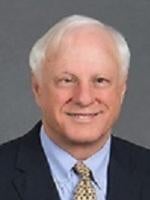Background
The Department of the Interior’s (DOI) Bureau of Ocean Energy Management (BOEM) issued a final, prepublication air rule on May 14, 2020 (30 CFR §§ 550 et seq.). It updates air quality rules in the central and western Gulf of Mexico and offshore Alaska’s North Slope of the Outer Continental Shelf (submerged lands seaward approximately 200 nautical miles off state coastal waters). BOEM under the Outer Continental Shelf Lands Act (OCSLA) and the Clean Air Act, and not the Environmental Protection Agency, regulates air emissions from exploration and production facilities (“offshore facilities”) in these OCS regions. (The rest of the OCS and onshore air is regulated by the EPA under the Clean Air Act.) BOEM regulates air emission of offshore facilities by approval and enforcement of operators and lessees’ exploration, production, and development plans. The new rule will be effective within 30 days of its publication.
History
The United States Geological Survey, predecessor of BOEM, issued OCS air quality rules nearly 40 years ago. These rules are updated in the new air rule. However, in 2016, BOEM had proposed broad revisions to the USGS air quality rule.[1] The proposal included the requirement to report greenhouse gases and regulation of mobile support vessels, no grandfathering, aggregation of facilities, etc. Industry comments on the proposed rule criticized the expansion of the rule beyond the mandate of the OCSLA for the regulation of onshore impacts and National Ambient Air Quality Standards (NAAQS) compliance from offshore facilities. Later in 2016, BOEM was instructed by executive order to re-review the proposal and to consider the public comments on the proposal. The results in 2020, consistent with the OCSLA, updated the 1980 rules and retained their scope. The update is limited to an evaluation of onshore impacts and NAAQS compliance from offshore facility emissions. It does not retain the new regulatory goals set out in the 2016 proposal. Tenets of the new rule follow.
“New” Facilities (After June 2, 1980)
Platform facilities with post-1980 approval of new or revised plans must not adversely affect onshore compliance with EPA’s NAAQS. Compliance is for criteria pollutants only,[2] and not for other pollutants like greenhouse gases or hazardous air pollutants. (The NAAQS establish acceptable concentration levels of criteria pollutants in the “ambient air,” that is, in the air the public may be exposed to.)
It is noteworthy that BOEM is more limited in air regulation than EPA, in that BOEM may only regulate certain air pollutants to the extent offshore emissions significantly affect attainment (cleanest) and non-attainment (not clean) onshore air quality.[3] It does not directly regulate OCS air quality or state seaward boundaries. The DOI will use facility distance from shore, facility size, number of sources, and onshore air quality in determining significance. The rule requires emission evaluation by lessees and operators.
Like the 1980 rules, the new rules have “emission exemption thresholds” for use in development and production plans and development operations coordination documents.[4] Only if a facility exceeds EETs will it need dispersion modeling to determine whether its projected emissions reach significant levels. This calculation is only for the platform facility attached to the seabed and not for unattached transport vessels.
If the modeling dictates, controls, called “Best Available Control Technology” (but this is a distinct standard from onshore BACT required for Prevention of Significant Deterioration review) will be necessary. Emission limits will then be verified case by case by DOI. This includes emission reduction through processes, systems, and technology to control each regulated air pollutant, plus monitoring requirements and any onshore or offshore offsets (e.g., shutdowns).
“Existing” Facilities and State Rules
There is limited grandfathering for those few facilities that have approved plans prior to June 2, 1980. However, DOI may still require their submission of basic air emission data if requested by a state. If DOI determines that an existing facility has the potential to significantly affect onshore air, more information will be required to determine whether the EET applies. (See § 550.304(c).) If the facility is not exempt, any significant levels may require compliance schedules, monitoring, and BACT.
Conclusion
The new rule will be effective soon. The DOI’s Bureau of Safety and Environmental Enforcement will have the main enforcement role. Currently, under old (1980) rules, affected OCS operators/lessees still need prior approvals and must meet requirements with respect to below-SL onshore NAAQS impacts, calculations, emission reduction measures, and documentation of calculations. The new rules merely update these earlier requirements.
[1] See 81 F.R. 19717 (04/05/2016).
[2] Carbon monoxide, lead, nitrogen dioxide, ozone, particulate matter (PM10 and PM2.5), sulphur dioxide, plus precursors like volatile organic compounds.
[3] § 505.303(e). For instance, “significant levels” (SL) for newer facilities include (existing facilities have similar SLs):
|
1980 Old Rule* |
2020 New Rule* |
||||
|
|
Annual |
24 hour, etc. |
|
Annual |
24 hour, etc. |
|
SO2 |
1 |
5 |
SO2 |
1 |
5 |
|
NO2 |
1 |
5 |
NO2 |
1 |
- |
|
CO |
1 |
5 |
CO |
- |
- |
|
|
|
|
PM10 |
1 |
5 |
|
|
|
|
PM2.5 |
.3 |
1.2 |
* Micrograms per cubic meter of air
[4] The lessee must use the highest annual total amount of emissions calculated for each pollutant. BOEM formulas are used based on short tons per year emitted and facility distance from onshore. (See § 550.21.)





 />i
/>i

